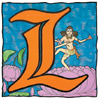 OVING HINDU PARENTS WORLDWIDE HAVE CALLED FOR A COMMON RELIGIOUS CODE TO TEACH THEIR SONS AND DAUGHTERS. THEY HAVE ASKED, “WHAT IS THE MINIMUM I MUST DO TO DISPATCH MY DUTY TO MY RELIGION AND MY CHILDREN?” THE WORLD Hindu Federation of Nepal discussed this need at its international conference in Bali in late 1992, and shared their concern with me at that time. In response, I told the Bali Mahāsaṅgha that I would work with my research staff to prepare the minimal duties for parents to pass on the Sanātana Dharma to the next generation. The result was ten ślokas summarizing the five essential Hindu beliefs, and the five corresponding observances performed in expression of those beliefs. Āchāryas concur that these are sufficient to know and follow to be a good Hindu. We first published these in HINDUISM TODAY’S March, 1993, edition, along with the very popular primer for children covering Hinduism from A to Z. Both of these are assembled here as A Children’s Primer. In this section you will also find an illustrated summary of the essential Hindu saṁskāras, or rites of passage. These sacraments are vital to Hindus, for whom life is a sacred journey and every crucial step is acknowledged through traditional ceremony. There are many types of saṁskāras, from the rite anticipating conception to the funeral ceremony. Each one, properly observed, empowers spiritual life, preserves religious culture and establishes bonds with inner worlds as the soul accepts and matures into the responsibilities of each succeeding stage of life. The modern Hindu child raised up with these precepts, practices and sacraments will be a fully functioning human being, one who is tolerant, devotional, fair, fearless, obedient, secure, happy, selfless, detached and traditional.§
OVING HINDU PARENTS WORLDWIDE HAVE CALLED FOR A COMMON RELIGIOUS CODE TO TEACH THEIR SONS AND DAUGHTERS. THEY HAVE ASKED, “WHAT IS THE MINIMUM I MUST DO TO DISPATCH MY DUTY TO MY RELIGION AND MY CHILDREN?” THE WORLD Hindu Federation of Nepal discussed this need at its international conference in Bali in late 1992, and shared their concern with me at that time. In response, I told the Bali Mahāsaṅgha that I would work with my research staff to prepare the minimal duties for parents to pass on the Sanātana Dharma to the next generation. The result was ten ślokas summarizing the five essential Hindu beliefs, and the five corresponding observances performed in expression of those beliefs. Āchāryas concur that these are sufficient to know and follow to be a good Hindu. We first published these in HINDUISM TODAY’S March, 1993, edition, along with the very popular primer for children covering Hinduism from A to Z. Both of these are assembled here as A Children’s Primer. In this section you will also find an illustrated summary of the essential Hindu saṁskāras, or rites of passage. These sacraments are vital to Hindus, for whom life is a sacred journey and every crucial step is acknowledged through traditional ceremony. There are many types of saṁskāras, from the rite anticipating conception to the funeral ceremony. Each one, properly observed, empowers spiritual life, preserves religious culture and establishes bonds with inner worlds as the soul accepts and matures into the responsibilities of each succeeding stage of life. The modern Hindu child raised up with these precepts, practices and sacraments will be a fully functioning human being, one who is tolerant, devotional, fair, fearless, obedient, secure, happy, selfless, detached and traditional.§